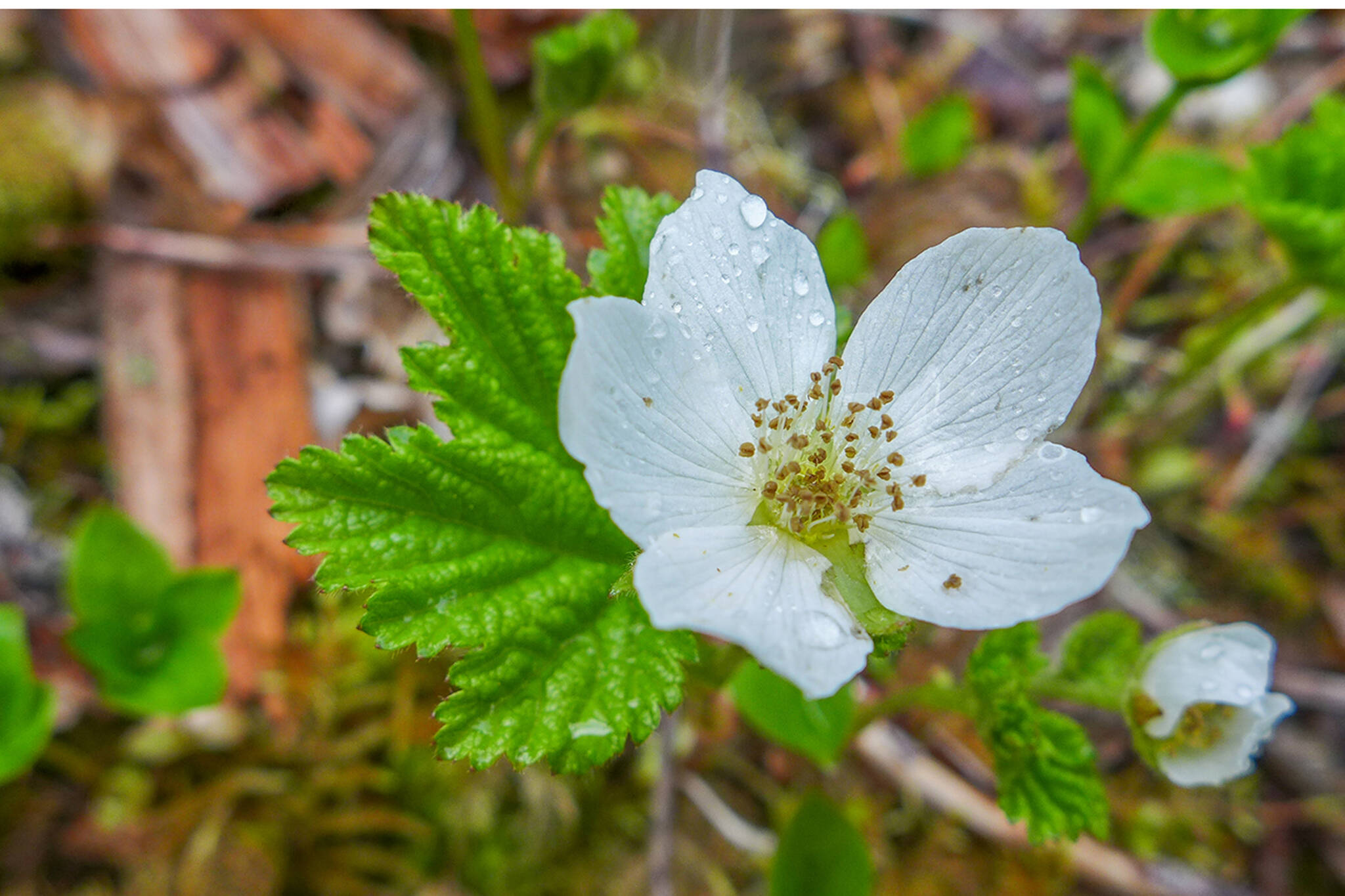By Mary F. Willson
For the Juneau Empire
One day in early June, I looked out my front window and there was a large, black animal chowing down horsetail. This guy was very big, well-upholstered, glossy and handsome. After a long lunch, he got up and ambled off into the woods. The mating season was on, and I reckon he was out cruising for ready females. No sensible, seasonally-ready lady bear would turn down this fellow!
The crowd of mallards that used my home pond in spring was gone; just one male hung around every day, loafing and sampling seeds that fell from the overhanging bird feeder. That male is still in his snazzy breeding plumage, unlike other males (which are molting) that visit the pond occasionally. One female started returning to the pond, but without a train of ducklings. She (I assume it was the same one) came back every day, spending time next to the male, feeding on fallen seeds and whatever else, and resting with the male under an overhanging tree. I’m guessing that she lost her first clutch of eggs; could she be thinking of a replacement clutch—but it’s rather late. And I hope the other females that were here earlier bring their broods to the pond, as usually happens.
Juvenile birds of several species were appearing in the first week of June. New broods of mallards appeared on Dredge Creek and Kingfisher Pond. I also saw well-grown juveniles of robins and juncos, managing quite competently by themselves; maybe their parents were starting second broods. Best of all, the chickadees that nested in a box near my driveway are now feeding fledglings, carrying gobbets of peanut butter to at least two young ones that are now on the far side of the pond.
A little hike up toward the first meadow on the Spaulding Trail was greeted by loud alarm calls of a greater yellowlegs who owned a small chain of muskeg-meadows. The alarms continued until I sat down on a log and became part of the landscape, and presently, I heard it calling from a nearby large muskeg. I was glad to see this bird, which I used to see in various other muskegs where bird habitat has now been wrecked by ATV traffic. Yellowlegs nest on the ground, often at the base of a small tree or mossy hummock, so I watched my feet carefully. The nest is a small cup in the moss, typically lined with little dead leaves, lichens, and sedges. The foraging habits of this shorebird are best known from intertidal zones, where they capture invertebrates and small fish, but they also forage in muskeg and other fresh-water ponds, taking immature dragonflies and aquatic bugs and beetles.
A few days later, I went back up the trail. The small plant whose silly English name is sticky false asphodel (Tofieldia glutinosa to me, but now in the genus Triantha) had begun to bloom. As I walked slowly up into the large muskeg, the yellowlegs quickly sounded the alarm and was joined by a second adult. What a racket! By luck, I happened to spot a discarded eggshell not far from the trail — brownish, with lots of blotches and spots, especially toward the wide end, and a few centimeters long. Just right for a yellowlegs. I got off the trail to wander between the pools and that really agitated both birds, who yelled even more fiercely and swooped down close to my head. Then, out of the corner of my eye, I glimpsed some motion and finally located the perpetrator, now perched on top of a small pine. ‘Twas a very fuzzy young yellowlegs, just a few days old! The typical clutch size for this bird is three or four eggs, so this youngster may have had siblings somewhere not far away. The adults certainly carried on as if I was a big danger no matter where I roamed in the muskeg and didn’t calm down until I left.
The first hike gave me the opportunity to check on something I should have done long ago: look closely at cloudberry flowers, which all look alike at first glance. Sure enough, once I looked, I could see what the field guide (and many scientific papers) describe—cloudberry plants are either male or female. In some flowers, the stamens are spindly and the anthers are small while the ovaries are substantial, and in others the stamens are relatively sturdy, with anthers full of pollen, and ovaries are reduced to near-invisibility—so these flowers don’t intend to make fruit. When I went up there a few days later, the cloudberries were almost done blooming, and it was hard to find open flowers. But I found a few, and they warned me not to be too quick in assigning gender to these plants. I found one flower with spindly stamens and no signs of ovaries (apparently sterile) and another flower with sturdy stamens and substantial ovaries (hermaphrodite)—and indeed, it turns out that rare hermaphroditic individuals are known to occur.
• Mary F. Willson is a retired professor of ecology. “On the Trails” appears every Wednesday in the Juneau Empire.

